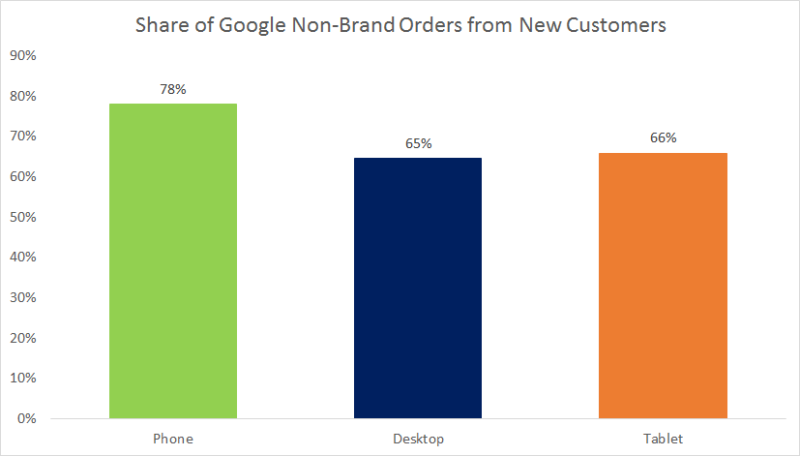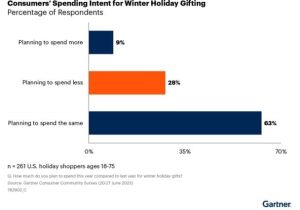Columnist Andy Taylor shares data from Merkle|RKG that illustrates how users behave when clicking on ads and how they evaluate ad choices on a SERP.
 Analyzing paid search orders based on whether they were placed by new-to-file or return customers can be a valuable exercise in determining how different areas of an account help drive new buyers to your site or aid in customer retention.
Analyzing paid search orders based on whether they were placed by new-to-file or return customers can be a valuable exercise in determining how different areas of an account help drive new buyers to your site or aid in customer retention.
Beyond that, it can also give you some insight into how searchers behave when clicking on ads and how brand recognition impacts decisions made on the SERP.
To illustrate, I’ll be unraveling some of our new versus existing customer data for one large Merkle advertiser.
The Obvious: Differences In Brand Versus Non-Brand
Let’s start by looking at a keyword segmentation that reveals a likely obvious difference in the share of orders that are placed by new customers: brand versus non-brand.
For the advertiser studied, the share of non-brand orders placed by new customers was more than 3x that of brand keywords.
This makes a lot of sense, as someone who is typing in a brand name for a search is more likely to have purchased from that brand in the past than someone typing in a generic query relevant to the brand. Thus, pretty much all advertisers observe this to some extent.
But we’ve got more interesting insights than that to get into. Next up is differences in performance based on the category of product.
Orders For Products That Meet More Urgent Needs Can Have A Higher Share Of New Customers
Without giving too much away about the advertiser studied, some of the products they sell could be categorized as meeting a fairly immediate need (but not so immediate that it can’t be ordered online), whereas other products are less urgent purchases.
Looking at new versus existing customers by product category for non-brand keywords, this advertiser finds that keywords for those products that would be considered more discretionary in nature produce a lower share of orders attributed to new-to-file customers.
There’s some logic to this, as searchers looking to fill an immediate need who have an existing relationship with a relevant brand would likely head immediately to that brand’s site or type in a branded search. Searchers with an immediate need who search for a non-brand query are more likely to be “free agents” and become new-to-file customers for the brand they convert with.
Obviously, not all businesses sell products that meet an urgent need, but it’s an interesting difference nonetheless.
Share Of Orders From New Customers Differs Significantly By Device
As shown in the chart below, the share of non-brand paid search orders from new customers is higher for phones than desktop and tablet devices.

This advertiser, in particular, benefits from “showrooming” habits, in which searchers are in a store or place where they can purchase a product immediately but check online for more information or better deals.
Thus, it makes sense that searchers on phones are more likely to be new customers for this advertiser than users on desktop or tablet devices, since they are more likely to be in a showrooming situation.
Evidence Suggests Existing Customers Are More Likely To Find Your Ads In Lower Positions
As mentioned earlier, new versus existing paid search customer data can also give advertisers a glimpse into how users evaluate ad choices on a SERP.
A good example of this for the advertiser studied is how the share of orders that comes from existing customers goes up for ads that are in lower average positions.

As you can see, there’s a pretty clean trend showing the share of orders coming from existing customers going up as the average position of the ad clicked on moves farther down the page.
To us, this indicates that users are more likely to find your ad and convert through it if they already have an existing relationship with your brand. On the other side of the coin, higher-position ads might better help to win new customers by catching their eye and establishing trust than ads in lower positions.
The first argument lines up well with the fact that users included in Remarketing Lists for Search Ads (RLSA) audiences, composed of users who have recently visited an advertiser’s website, typically have a much higher CTR (click-through rate) than users not included in RLSA audiences.
Thus, advertisers might actually be able to reduce bids for users who are already known to be familiar with the brand and still get clicks from these users. Both RLSA and Google’s Customer Match product, which allows advertisers to create lists targeting users for whom the advertiser has obtained email addresses firsthand, can help advertisers to test this out.
Conclusion
Every retailer should be looking to tie online orders to existing customer profiles as best as possible in order to get a better view of what types of orders each digital marketing channel is providing.
Within paid search, segmenting new versus existing customer share by keyword attributes, device, and even ad position can provide valuable direction in terms of creating effective KPIs (key performance indicators) and optimizing each part of a paid search account to meet goals regarding customer retention and acquisition.
[Article on Search Engine Land.]
Some opinions expressed in this article may be those of a guest author and not necessarily Marketing Land. Staff authors are listed here.
(Some images used under license from Shutterstock.com.)
Marketing Land – Internet Marketing News, Strategies & Tips
(53)
Report Post





